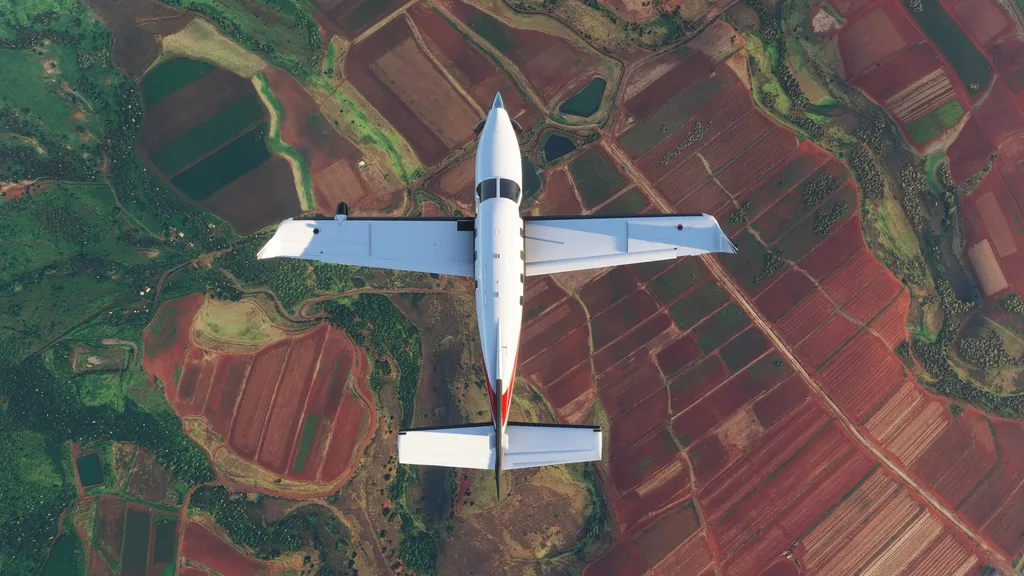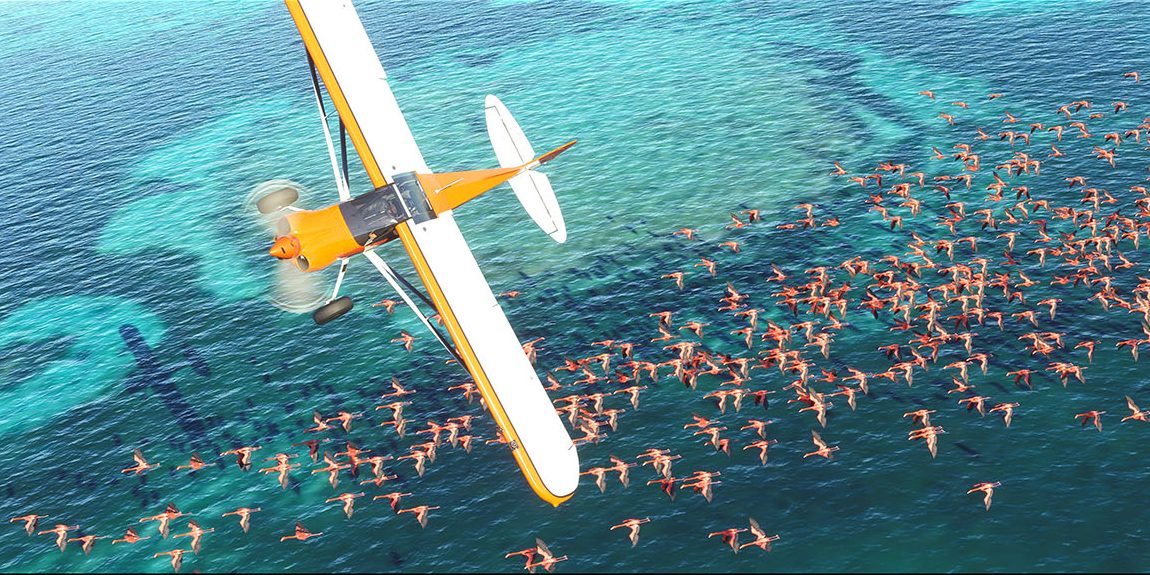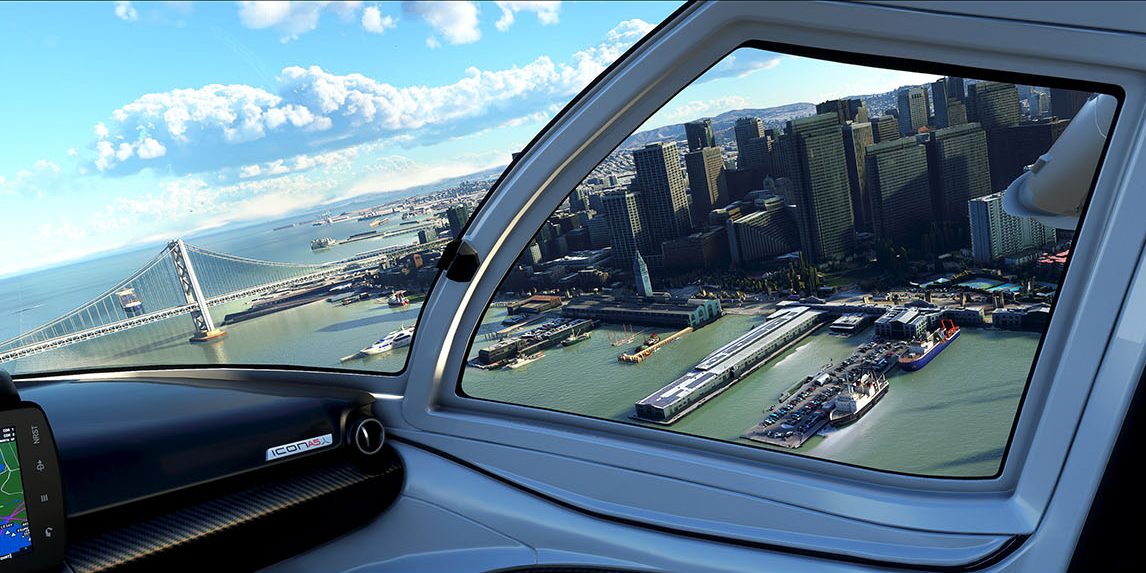Microsoft Flight Simulator is out on PC today and, even without the impending VR support, it’s a true marvel.
Using Bing Maps data, Azure AI and its own game engine, Flight Sim offers large-scale, authentic and photorealistic replicas of the real world to glide across. But, as great as Flight Sim is today, the promise of VR support in the future is far, far more exciting.
We know that Flight Sim will launch as a timed exclusive for Windows VR headsets when the latest entry into that catalog, the HP Reverb G2, arrives later this year. Support for other headsets will roll out later on. Having spent time with the game on launch day, though, there’s already a handful of areas that it’s clear VR support could have a big impact on.
The Camera
The camera in Microsoft Flight Simulator is a little bit of a fiddle, depending on your playstyle. With a controller, it’s easy enough to twist your head, but most control schemes also need you to go back and forth with the keyboard to find the best angle for you. In VR, that would simply be a case of sitting how you want to sit. It sounds simple but this really should be one of the biggest improvements VR support brings to the game.
The Controls
Details are thin on the ground about exactly how Asobo will integrate VR support into Flight Sim, but we’ve got our fingers crossed that we’ll see proper motion controller support in there. The existing robust controller support is great, and I’m sure many will still want to play with a HOTAS, but only VR motion controls can give you a direct connection to the cockpit you sit in.
We want to reach out to flick every switch, steer with our hands and wave as we skim past the Space Needle. If Asobo can pull off this level of integration, Flight Simulator will be a true VR marvel.
The Views And Immersion
Suffice to say the main reason we’re looking forward to playing Flight Sim in VR, though, is the views. Asobo has done a truly fantastic job bringing many of the world’s most iconic locations to life using Microsoft’s tech; cities are accurate and hold up to close detail, while forests, canyons and oceans bring out vibrant color and stunning draw distances. We can’t wait to hop into a headset and see it all come to life in VR.
Combine that with the highly-detailed cockpits, an area VR often shines brightest, and there’s hope for a truly immersive experience here. Hopefully we’ll get the same thrills as we did from seeing Google Earth in VR, only now with a game to keep us there too.
But Performance Is A Concern
If there’s a negative to level at Flight Sim right now, it’s performance. Many outlets have reported issues with framerate in the game’s busier areas using even the best hardware on the lowest settings. We’ve been playing the game with a 2060 Super on multiple settings and seen issues right across the board even in the training levels. Never has it made the experience unplayable, but it certainly has us concerned about where recommended specs for the game in VR might land. It might be that the rumored new Nvidia cards are a fair bit more essential if you’re hoping to see this one in VR.
What are you most looking forward to in Microsoft Flight Simulator’s VR support? Let us know in the comments below!




























